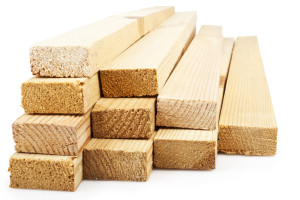High Standards in Lumber

 Wood, unlike other common building materials, relies on nature to develop its structural properties. Because timber is a natural material, it routinely undergoes testing to ensure that design values remain accurate.
Wood, unlike other common building materials, relies on nature to develop its structural properties. Because timber is a natural material, it routinely undergoes testing to ensure that design values remain accurate.
Earlier this year the American Lumber Standards Committee (ALSC) approve new, reduced design values for southern pine lumber that are set to go into effect on June 1, 2012. The changes apply to No.2 and lower grades of visually graded southern and mixed southern pine with widths and thickness between two (2) and four (4) inches. These changes will affect 2x4s and 4x4s, which are the sizes most commonly used in light-frame construction. Future changes can be expected for all southern pine dimensional lumber once additional testing is complete. The reason for the reduction has not been fully explained, but , but a likely cause is forestry management practices that result in faster tree growth. Fast-growing trees produce wider growth rings, making the wood less dense than trees that develop at a slower rate.
The design values will be reduced for bending, tension, and compression by up to thirty-five percent according to the Southern Forest Products Association (SFPA). These changes result in shorted spans and smaller load capacities for the affected lumber. The new design values are to be used on all work permitted after the June 1, 2012 effective date, although since Building Codes are enforced at state or local levels, the exact dates of enforcement will vary.
This change to the design values and the expected changes for larger dimensional lumber must be taken into account when constructing anything of southern pine in the future. New design tables are available from the SFPA, as well as comparisons with other species. The changes also present the problem that repairing damaged lumber with new southern pine may require the use of a larger cross section, change in grade, or modification to spans to provide adequate support for the load.
